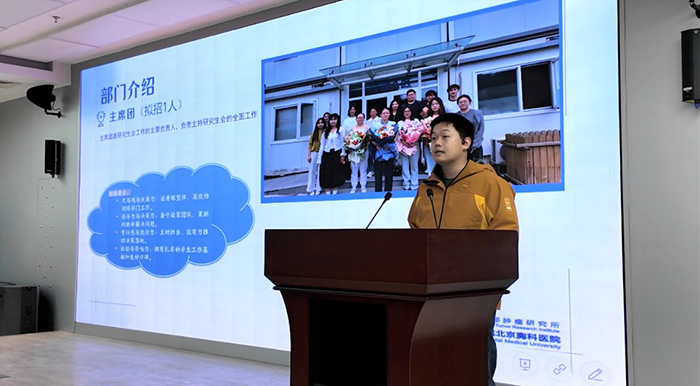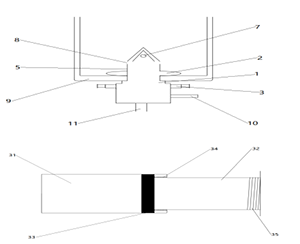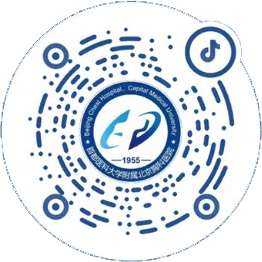2019年
No.18
Medical Abstracts
Keyword: lung cancer
1. N Engl J Med. 2019 Nov 21;381(21):2020-2031. doi: 10.1056/NEJMoa1910231. Epub 2019 Sep 28.
Nivolumab plus Ipilimumab in Advanced Non-Small-Cell Lung Cancer.
Hellmann MD(1), Paz-Ares L(1), Bernabe Caro R(1), Zurawski B(1), Kim SW(1),
Carcereny Costa E(1), Park K(1), Alexandru A(1), Lupinacci L(1), de la Mora
Jimenez E(1), Sakai H(1), Albert I(1), Vergnenegre A(1), Peters S(1), Syrigos
K(1), Barlesi F(1), Reck M(1), Borghaei H(1), Brahmer JR(1), O'Byrne KJ(1), Geese
WJ(1), Bhagavatheeswaran P(1), Rabindran SK(1), Kasinathan RS(1), Nathan FE(1),
Ramalingam SS(1).
Author information:
(1)From the Memorial Sloan Kettering Cancer Center, New York (M.D.H.); Hospital
Universitario Doce de Octubre, Centro Nacional de Investigaciones Oncológicas,
Universidad Complutense, and Centro de Investigación Biomédica en Red de Cáncer,
Madrid (L.P.-A.), Hospital Universitario Virgen Del Rocio, Seville (R.B.C.),...
BACKGROUND: In an early-phase study involving patients with advanced
non-small-cell lung cancer (NSCLC), the response rate was better with nivolumab
plus ipilimumab than with nivolumab monotherapy, particularly among patients with
tumors that expressed programmed death ligand 1 (PD-L1). Data are needed to
assess the long-term benefit of nivolumab plus ipilimumab in patients with NSCLC.
METHODS: In this open-label, phase 3 trial, we randomly assigned patients with
stage IV or recurrent NSCLC and a PD-L1 expression level of 1% or more in a 1:1:1
ratio to receive nivolumab plus ipilimumab, nivolumab alone, or chemotherapy. The
patients who had a PD-L1 expression level of less than 1% were randomly assigned
in a 1:1:1 ratio to receive nivolumab plus ipilimumab, nivolumab plus
chemotherapy, or chemotherapy alone. All the patients had received no previous
chemotherapy. The primary end point reported here was overall survival with
nivolumab plus ipilimumab as compared with chemotherapy in patients with a PD-L1
expression level of 1% or more.
RESULTS: Among the patients with a PD-L1 expression level of 1% or more, the
median duration of overall survival was 17.1 months (95% confidence interval
[CI], 15.0 to 20.1) with nivolumab plus ipilimumab and 14.9 months (95% CI, 12.7
to 16.7) with chemotherapy (P = 0.007), with 2-year overall survival rates of
40.0% and 32.8%, respectively. The median duration of response was 23.2 months
with nivolumab plus ipilimumab and 6.2 months with chemotherapy. The overall
survival benefit was also observed in patients with a PD-L1 expression level of
less than 1%, with a median duration of 17.2 months (95% CI, 12.8 to 22.0) with
nivolumab plus ipilimumab and 12.2 months (95% CI, 9.2 to 14.3) with
chemotherapy. Among all the patients in the trial, the median duration of overall
survival was 17.1 months (95% CI, 15.2 to 19.9) with nivolumab plus ipilimumab
and 13.9 months (95% CI, 12.2 to 15.1) with chemotherapy. The percentage of
patients with grade 3 or 4 treatment-related adverse events in the overall
population was 32.8% with nivolumab plus ipilimumab and 36.0% with chemotherapy.
CONCLUSIONS: First-line treatment with nivolumab plus ipilimumab resulted in a
longer duration of overall survival than did chemotherapy in patients with NSCLC,
independent of the PD-L1 expression level. No new safety concerns emerged with
longer follow-up. (Funded by Bristol-Myers Squibb and Ono Pharmaceutical;
CheckMate 227 ClinicalTrials.gov number, NCT02477826.).
Copyright © 2019 Massachusetts Medical Society.
DOI: 10.1056/NEJMoa1910231
PMID: 31562796 [Indexed for MEDLINE]
2. Nat Rev Cancer. 2019 Sep;19(9):495-509. doi: 10.1038/s41568-019-0179-8. Epub 2019 Aug 12.
Co-occurring genomic alterations in non-small-cell lung cancer biology and
therapy.
Skoulidis F(1), Heymach JV(2).
Author information:
(1)Department of Thoracic and Head and Neck Medical Oncology, The University of
Texas MD Anderson Cancer Center, Houston, TX, USA. fskoulidis@mdanderson.org.
(2)Department of Thoracic and Head and Neck Medical Oncology, The University of
Texas MD Anderson Cancer Center, Houston, TX, USA.
The impressive clinical activity of small-molecule receptor tyrosine kinase
inhibitors for oncogene-addicted subgroups of non-small-cell lung cancer (for
example, those driven by activating mutations in the gene encoding epidermal
growth factor receptor (EGFR) or rearrangements in the genes encoding the
receptor tyrosine kinases anaplastic lymphoma kinase (ALK), ROS proto-oncogene 1
(ROS1) and rearranged during transfection (RET)) has established an
oncogene-centric molecular classification paradigm in this disease. However,
recent studies have revealed considerable phenotypic diversity downstream of
tumour-initiating oncogenes. Co-occurring genomic alterations, particularly in
tumour suppressor genes such as TP53 and LKB1 (also known as STK11), have emerged
as core determinants of the molecular and clinical heterogeneity of
oncogene-driven lung cancer subgroups through their effects on both tumour
cell-intrinsic and non-cell-autonomous cancer hallmarks. In this Review, we
discuss the impact of co-mutations on the pathogenesis, biology,
microenvironmental interactions and therapeutic vulnerabilities of non-small-cell
lung cancer and assess the challenges and opportunities that co-mutations present
for personalized anticancer therapy, as well as the expanding field of precision
immunotherapy.
DOI: 10.1038/s41568-019-0179-8
PMID: 31406302
3. Lancet Oncol. 2019 Oct;20(10):e582-e589. doi: 10.1016/S1470-2045(19)30335-3. Epub 2019 Sep 30.
US Food and Drug Administration review of statistical analysis of
patient-reported outcomes in lung cancer clinical trials approved between
January, 2008, and December, 2017.
Fiero MH(1), Roydhouse JK(2), Vallejo J(3), King-Kallimanis BL(2), Kluetz PG(4),
Sridhara R(3).
Author information:
(1)Office of Biostatistics, Center for Drug Evaluation and Research, US Food and
Drug Administration, Silver Spring, MD, USA. Electronic address:
mallorie.fiero@fda.hhs.gov.
(2)Office of Hematology and Oncology Products, Center for Drug Evaluation and
Research, US Food and Drug Administration, Silver Spring, MD, USA.
(3)Office of Biostatistics, Center for Drug Evaluation and Research, US Food and
Drug Administration, Silver Spring, MD, USA.
(4)Oncology Center of Excellence, US Food and Drug Administration, Silver Spring,
MD, USA.
With the advent of patient-focused drug development, the US Food and Drug
Administration (FDA) has redoubled its efforts to review patient-reported outcome
(PRO) data in cancer trials submitted as part of a drug's marketing application.
This Review aims to characterise the statistical analysis of PRO data from
pivotal lung cancer trials submitted to support FDA drug approval between
January, 2008, and December, 2017. For each trial and PRO instrument identified,
we evaluated prespecified PRO concepts, statistical analysis, missing data and
sensitivity analysis, instrument completion, and clinical relevance. Of the 37
pivotal lung cancer trials used to support FDA drug approval, 25 (68%) trials
included PRO measures. The most common prespecified PRO concepts were cough,
dyspnoea, and chest pain. At the trial level, the most common statistical
analyses were descriptive (24 trials [96%]), followed by time-to-event analyses
(19 trials [76%]), longitudinal analyses (12 trials [48%]), and basic inferential
tests or general linear models (10 trials [40%]). Our findings indicate a wide
variation in the analytic techniques and data presentation methods used, with
very few trials reporting clear PRO research objectives and sensitivity analyses
for PRO results. Our work further supports the need for focused research
objectives to justify and to guide the analytic strategy of PROs to facilitate
the interpretation of patient experience.
Copyright © 2019 Elsevier Ltd. All rights reserved.
DOI: 10.1016/S1470-2045(19)30335-3
PMID: 31579004
4. J Natl Cancer Inst. 2019 Sep 30. pii: djz164. doi: 10.1093/jnci/djz164. [Epub ahead of print]
A comparative modeling analysis of risk-based lung cancer screening strategies.
Ten Haaf K(1), Bastani M(2), Cao P(3), Jeon J(3), Toumazis I(2), Han SS(2)(4),
Plevritis SK(2), Blom EF(1), Kong CY(5)(6), Tammemägi MC(7), Feuer EJ(8), Meza
R(3), de Koning HJ(1).
Author information:
(1)Department of Public Health, Erasmus MC - University Medical Centre Rotterdam,
Rotterdam, the Netherlands.
(2)Department of Radiology, Stanford University, Palo Alto, California, United
States of America.
(3)Department of Epidemiology, University of Michigan, Ann Arbor, Michigan,
United States of America.
...
BACKGROUND: Risk-prediction models have been proposed to select individuals for
lung cancer screening. However, their long-term effects are uncertain. This study
evaluates long-term benefits and harms of risk-based screening compared to
current United States Preventive Services Task Force (USPSTF) recommendations.
METHODS: Four independent natural-history models performed a comparative modeling
study evaluating long-term benefits and harms of selecting individuals for lung
cancer screening through risk-prediction models. 363 risk-based screening
strategies varying by screening starting and stopping age, risk-prediction model
used for eligibility (Bach, PLCOm2012, LCDRAT), and risk-threshold were evaluated
for a 1950 U.S. birth-cohort. Among the evaluated outcomes were percentage of
individuals ever screened, screens required, lung cancer deaths averted,
life-years gained and overdiagnosis.
RESULTS: Risk-based screening strategies requiring similar screens among
individuals aged 55-80 as the USPSTF-criteria (corresponding risk-thresholds:
Bach: 2.8%, PLCOm2012: 1.7%, LCDRAT: 1.7%) averted considerably more lung cancer
deaths (Bach: 693, PLCOm2012: 698, LCDRAT: 696, USPSTF: 613). However, life-years
gained were only modestly higher (Bach: 8,660, PLCOm2012: 8,862, LCDRAT,
8,631,USPSTF: 8,590) and risk-based strategies had more overdiagnosis (Bach: 149,
PLCOm2012: 147, LCDRAT: 150, USPSTF: 115). Sensitivity analyses suggests
excluding individuals with limited life-expectancies (<5 years) from screening
retains the life-years gained by risk-based screening, while reducing
overdiagnosis by > 65.3%.
CONCLUSIONS: Risk-based lung cancer screening strategies prevent considerably
more lung cancer deaths than current recommendations. However, they yield modest
additional life-years and increased overdiagnosis due to predominantly selecting
older individuals. Efficient implementation of risk-based lung cancer screening
requires careful consideration of life-expectancy for determining optimal
individual stopping ages.
© The Author(s) 2019. Published by Oxford University Press.
DOI: 10.1093/jnci/djz164
PMID: 31566216
5. J Clin Oncol. 2019 Sep 10;37(26):2360-2367. doi: 10.1200/JCO.19.01006. Epub 2019 Jul 30.
Pemetrexed, Bevacizumab, or the Combination As Maintenance Therapy for Advanced
Nonsquamous Non-Small-Cell Lung Cancer: ECOG-ACRIN 5508.
Ramalingam SS(1), Dahlberg SE(2), Belani CP(3), Saltzman JN(4), Pennell NA(5),
Nambudiri GS(6), McCann JC(7), Winegarden JD(8), Kassem MA(9), Mohamed MK(10),
Rothman JM(11), Lyss AP(12), Horn L(13), Stinchcombe TE(14), Schiller JH(15).
Author information:
(1)Winship Cancer Institute of Emory University, Atlanta, GA.
(2)Dana-Farber Cancer Institute, Boston, MA.
(3)Penn State Health Milton S. Hershey Medical Center, Hershey, PA.
...
PURPOSE: Pemetrexed or bevacizumab is used for maintenance therapy of advanced
nonsquamous non-small-cell lung cancer (NSCLC). The combination of bevacizumab
and pemetrexed has also demonstrated efficacy. We conducted a randomized study to
determine the optimal maintenance therapy.
PATIENTS AND METHODS: Patients with advanced nonsquamous NSCLC and no prior
systemic therapy received carboplatin (area under the curve, 6), paclitaxel (200
mg/m2), and bevacizumab (15 mg/kg) for up to four cycles. Patients without
progression after four cycles were randomly assigned to maintenance therapy with
bevacizumab (15 mg/kg), pemetrexed (500 mg/m2), or a combination of the two
agents. The primary end point was overall survival, with bevacizumab serving as
the control group.
RESULTS: Of the 1,516 patients enrolled, 874 (57%) were randomly assigned after
induction therapy to one of the three maintenance therapy groups. With a median
follow-up of 50.6 months, median survival with pemetrexed was 15.9 months,
compared with 14.4 months with bevacizumab (hazard ratio [HR], 0.86; P = .12);
median survival with pemetrexed and bevacizumab was 16.4 months (HR, 0.9; P =
.28); median progression-free survival was 4.2, 5.1 (HR, 0.85; P = .06), and 7.5
months (HR, 0.67; P < .001) for the three groups, respectively. Incidence of
worst grade 3 to 4 toxicity was 29%, 37%, and 51%, respectively, for bevacizumab,
pemetrexed, and the combination regimen.
CONCLUSION: Single-agent bevacizumab or pemetrexed is efficacious as maintenance
therapy for advanced nonsquamous NSCLC. Because of a lack of survival benefit and
higher toxicity, the combination of bevacizumab and pemetrexed cannot be
recommended.
DOI: 10.1200/JCO.19.01006
PMID: 31361535
6. J Clin Oncol. 2019 Sep 1;37(25):2235-2245. doi: 10.1200/JCO.19.00075. Epub 2019 Jun 13.
Erlotinib Versus Gemcitabine Plus Cisplatin as Neoadjuvant Treatment of Stage
IIIA-N2 EGFR-Mutant Non-Small-Cell Lung Cancer (EMERGING-CTONG 1103): A
Randomized Phase II Study.
Zhong WZ(1), Chen KN(2), Chen C(3), Gu CD(4), Wang J(5), Yang XN(1), Mao WM(6),
Wang Q(7), Qiao GB(1)(8), Cheng Y(9), Xu L(10), Wang CL(11), Chen MW(12), Kang
X(2), Yan W(2), Yan HH(1), Liao RQ(1), Yang JJ(1), Zhang XC(1), Zhou Q(1), Wu
YL(1).
Author information:
(1)Guangdong Provincial People's Hospital and Guangdong Academy of Medical
Sciences, Guangzhou, People's Republic of China.
(2)Peking University Cancer Hospital and Institute, Beijing, People's Republic of
China.
(3)Fujian Medical University Union Hospital, Fuzhou, People's Republic of China.
...
PURPOSE: To assess the benefits of epidermal growth factor receptor (EGFR)
tyrosine kinase inhibitors as neoadjuvant/adjuvant therapies in locally advanced
EGFR mutation-positive non-small-cell lung cancer.
PATIENTS AND METHODS: This was a multicenter (17 centers in China), open-label,
phase II, randomized controlled trial of erlotinib versus gemcitabine plus
cisplatin (GC chemotherapy) as neoadjuvant/adjuvant therapy in patients with
stage IIIA-N2 non-small-cell lung cancer with EGFR mutations in exon 19 or 21
(EMERGING). Patients received erlotinib 150 mg/d (neoadjuvant therapy, 42 days;
adjuvant therapy, up to 12 months) or gemcitabine 1,250 mg/m2 plus cisplatin 75
mg/m2 (neoadjuvant therapy, two cycles; adjuvant therapy, up to two cycles).
Assessments were performed at 6 weeks and every 3 months postsurgery. The primary
end point was objective response rate (ORR) by Response Evaluation Criteria in
Solid Tumors (RECIST) version 1.1; secondary end points were pathologic complete
response, progression-free survival (PFS), overall survival, safety, and
tolerability.
RESULTS: Of 386 patients screened, 72 were randomly assigned to treatment
(intention-to-treat population), and 71 were included in the safety analysis (one
patient withdrew before treatment). The ORR for neoadjuvant erlotinib versus GC
chemotherapy was 54.1% versus 34.3% (odds ratio, 2.26; 95% CI, 0.87 to 5.84; P =
.092). No pathologic complete response was identified in either arm. Three (9.7%)
of 31 patients and zero of 23 patients in the erlotinib and GC chemotherapy arms,
respectively, had a major pathologic response. Median PFS was significantly
longer with erlotinib (21.5 months) versus GC chemotherapy (11.4 months; hazard
ratio, 0.39; 95% CI, 0.23 to 0.67; P < .001). Observed adverse events reflected
those most commonly seen with the two treatments.
CONCLUSION: The primary end point of ORR with 42 days of neoadjuvant erlotinib
was not met, but the secondary end point PFS was significantly improved.
DOI: 10.1200/JCO.19.00075
PMID: 31194613
7. J Natl Cancer Inst. 2019 Sep 1;111(9):996-999. doi: 10.1093/jnci/djz041.
Identification of Candidates for Longer Lung Cancer Screening Intervals Following
a Negative Low-Dose Computed Tomography Result.
Robbins HA, Berg CD, Cheung LC, Chaturvedi AK, Katki HA.
Comment in
J Thorac Dis. 2019 Sep;11(Suppl 15):S1916-S1918.
J Thorac Dis. 2019 Sep;11(9):3681-3688.
Lengthening the annual low-dose computed tomography (CT) screening interval for
individuals at lowest risk of lung cancer could reduce harms and improve
efficiency. We analyzed 23 328 participants in the National Lung Screening Trial
who had a negative CT screen (no ≥4-mm nodules) to develop an individualized
model for lung cancer risk after a negative CT. The Lung Cancer Risk Assessment
Tool + CT (LCRAT+CT) updates "prescreening risk" (calculated using traditional
risk factors) with selected CT features. At the next annual screen following a
negative CT, risk of cancer detection was reduced among the 70% of participants
with neither CT-detected emphysema nor consolidation (median risk = 0.2%,
interquartile range [IQR] = 0.1%-0.3%). However, risk increased for the 30% with
CT emphysema (median risk = 0.5%, IQR = 0.3%-0.8%) and the 0.6% with
consolidation (median = 1.6%, IQR = 1.0%-2.5%). As one example, a threshold of
next-screen risk lower than 0.3% would lengthen the interval for 57.8% of
screen-negatives, thus averting 49.8% of next-screen false-positives among
screen-negatives but delaying diagnosis for 23.9% of cancers. Our results support
that many, but not all, screen-negatives might reasonably lengthen their CT
screening interval.
© World Health Organization, 2019. All rights reserved. The World Health
Organization has granted the Publisher permission for the reproduction of this
article.
DOI: 10.1093/jnci/djz041
PMCID: PMC6748798 [Available on 2020-04-12]
PMID: 30976808
8. Am J Respir Crit Care Med. 2019 Sep 15;200(6):742-750. doi:
10.1164/rccm.201806-1178OC.
Driver Mutations in Normal Airway Epithelium Elucidate Spatiotemporal Resolution
of Lung Cancer.
Kadara H(1), Sivakumar S(2)(3), Jakubek Y(2), San Lucas FA(2), Lang W(1),
McDowell T(1), Weber Z(4), Behrens C(5), Davies GE(4), Kalhor N(6), Moran C(6),
El-Zein R(7), Mehran R(8), Swisher SG(8), Wang J(9), Zhang J(5), Fujimoto J(1),
Fowler J(2), Heymach JV(5), Dubinett S(10), Spira AE(11), Ehli EA(4), Wistuba
II(1), Scheet P(1)(2)(3).
Author information:
(1)Department of Translational Molecular Pathology.
(2)Department of Epidemiology.
(3)MD Anderson Cancer Center UTHealth Graduate School of Biomedical Sciences,
Houston, Texas.
...
Comment in
Am J Respir Crit Care Med. 2019 Sep 15;200(6):657-659.
Rationale: Uninvolved normal-appearing airway epithelium has been shown to
exhibit specific mutations characteristic of nearby non-small cell lung cancers
(NSCLCs). Yet, its somatic mutational landscape in patients with early-stage
NSCLC is unknown.Objectives: To comprehensively survey the somatic mutational
architecture of the normal airway epithelium in patients with early-stage
NSCLC.Methods: Multiregion normal airways, comprising tumor-adjacent small
airways, tumor-distant large airways, nasal epithelium and uninvolved normal lung
(collectively airway field), matched NSCLCs, and blood cells (n = 498) from 48
patients were interrogated for somatic single-nucleotide variants by
deep-targeted DNA sequencing and for chromosomal allelic imbalance events by
genome-wide genotype array profiling. Spatiotemporal relationships between the
airway field and NSCLCs were assessed by phylogenetic analysis.Measurements and
Main Results: Genomic airway field carcinogenesis was observed in 25 cases (52%).
The airway field epithelium exhibited a total of 269 somatic mutations in most
patients (n = 36) including key drivers that were shared with the NSCLCs. Allele
frequencies of these acquired variants were overall higher in NSCLCs. Integrative
analysis of single-nucleotide variants and allelic imbalance events revealed
driver genes with shared "two-hit" alterations in the airway field (e.g., TP53,
KRAS, KEAP1, STK11, and CDKN2A) and those with single hits progressing to two in
the NSCLCs (e.g., PIK3CA and NOTCH1).Conclusions: Tumor-adjacent and
tumor-distant normal-appearing airway epithelia exhibit somatic driver
alterations that undergo selection-driven clonal expansion in NSCLC. These events
offer spatiotemporal insights into the development of NSCLC and, thus, potential
targets for early treatment.
DOI: 10.1164/rccm.201806-1178OC
PMCID: PMC6775870 [Available on 2020-09-15]
PMID: 30896962
9. Br J Cancer. 2019 Oct;121(9):725-737. doi: 10.1038/s41416-019-0573-8. Epub 2019 Sep 30.
Resistance mechanisms to osimertinib in EGFR-mutated non-small cell lung cancer.
Leonetti A(1)(2), Sharma S(2), Minari R(1), Perego P(3), Giovannetti E(4)(5),
Tiseo M(1)(6).
Author information:
(1)Medical Oncology Unit, University Hospital of Parma, 43126, Parma, Italy.
(2)Department of Medical Oncology, Amsterdam University Medical Center, VU
University, 1081 HV, Amsterdam, Netherlands.
(3)Molecular Pharmacology Unit, Department of Applied Research and Technological
Development, Fondazione IRCCS Istituto Nazionale dei Tumori, 20133, Milan, Italy.
(4)Department of Medical Oncology, Amsterdam University Medical Center, VU
University, 1081 HV, Amsterdam, Netherlands. elisa.giovannetti@gmail.com.
(5)Cancer Pharmacology Lab, AIRC Start-Up Unit, Fondazione Pisana per la Scienza,
56017, Pisa, Italy. elisa.giovannetti@gmail.com.
(6)Department of Medicine and Surgery, University of Parma, Parma, Italy.
Osimertinib is an irreversible, third-generation epidermal growth factor receptor
(EGFR) tyrosine kinase inhibitor that is highly selective for EGFR-activating
mutations as well as the EGFR T790M mutation in patients with advanced non-small
cell lung cancer (NSCLC) with EGFR oncogene addiction. Despite the documented
efficacy of osimertinib in first- and second-line settings, patients inevitably
develop resistance, with no further clear-cut therapeutic options to date other
than chemotherapy and locally ablative therapy for selected individuals. On
account of the high degree of tumour heterogeneity and adaptive cellular
signalling pathways in NSCLC, the acquired osimertinib resistance is highly
heterogeneous, encompassing EGFR-dependent as well as EGFR-independent
mechanisms. Furthermore, data from repeat plasma genotyping analyses have
highlighted differences in the frequency and preponderance of resistance
mechanisms when osimertinib is administered in a front-line versus second-line
setting, underlying the discrepancies in selection pressure and clonal evolution.
This review summarises the molecular mechanisms of resistance to osimertinib in
patients with advanced EGFR-mutated NSCLC, including MET/HER2 amplification,
activation of the RAS-mitogen-activated protein kinase (MAPK) or
RAS-phosphatidylinositol 3-kinase (PI3K) pathways, novel fusion events and
histological/phenotypic transformation, as well as discussing the current
evidence regarding potential new approaches to counteract osimertinib resistance.
DOI: 10.1038/s41416-019-0573-8
PMCID: PMC6889286 [Available on 2020-09-30]
PMID: 31564718
10. Eur J Cancer. 2019 Nov;121:64-73. doi: 10.1016/j.ejca.2019.08.012. Epub 2019 Sep 24.
Pemetrexed exposure predicts toxicity in advanced non-small-cell lung cancer: A
prospective cohort study.
Visser S(1), Koolen SLW(2), de Bruijn P(3), Belderbos HNA(4), Cornelissen R(5),
Mathijssen RHJ(3), Stricker BH(6), Aerts JGJV(7).
Author information:
(1)Department of Pulmonary Medicine, Amphia Hospital, Breda, Netherlands;
Department of Pulmonary Medicine, Erasmus MC Cancer Institute, Rotterdam,
Netherlands; Department of Epidemiology, Erasmus Medical Center, Rotterdam,
Netherlands.
(2)Department of Medical Oncology, Erasmus MC Cancer Institute, Rotterdam,
Netherlands; Department of Hospital Pharmacy, Erasmus Medical Center, Rotterdam,
Netherlands.
(3)Department of Medical Oncology, Erasmus MC Cancer Institute, Rotterdam,
Netherlands.
...
BACKGROUND: We explored whether total exposure to pemetrexed predicts
effectiveness and toxicity in advanced non-small-cell lung cancer (NSCLC).
Furthermore, we investigated alternative dosing schedules.
METHODS: In this prospective cohort study, patients with advanced NSCLC receiving
first- or second-line pemetrexed(/platinum) were enrolled. Plasma sampling was
performed weekly (cyclePK) and within 24 h (24hPK) after pemetrexed
administration. With population pharmacokinetic/pharmacodynamic modelling, total
exposure to pemetrexed during cycle 1 (area under the curve during chemotherapy
cycle 1 [AUC1]) was estimated and related to progression-free survival
(PFS)/overall survival (OS). We compared mean AUC1 (mg·h/L) in patients with and
without severe chemotherapy-related adverse events (AEs) during total treatment.
Second, different dosing schedules were simulated to minimise the estimated
variability (coefficient of variation [CV]) of AUC.
RESULTS: For 106 of 165 patients, concentrations of pemetrexed were quantified
(24hPK, n = 15; cyclePK, n = 106). After adjusting for prognostic factors, sex,
disease stage and World Health Organisation performance score, AUC1 did not
predict PFS/OS in treatment-naive patients (n = 95) (OS, hazard ratio
[HR] = 1.05, 95% confidence interval [CI]: 1.00-1.11; PFS, HR = 1.03, 95% CI:
0.98-1.08). Patients with severe chemotherapy-related AEs (n = 55) had
significantly higher AUC1 values than patients without them (n = 51) (226 ± 53 vs
190 ± 31, p < 0.001). Compared with body surface area-based dosing (CV: 22.5%),
simulation of estimated glomerular filtration rate (eGFR)-based dosing (CV 18.5%)
and fixed dose of 900 mg with 25% dose reduction, if the eGFR<60 mL/min (CV:
19.1%), resulted in less interindividual variability of AUC.
CONCLUSIONS: Higher exposure to pemetrexed does not increase PFS/OS but is
significantly associated with increased occurrence of severe toxicity. Our
findings suggest that fixed dosing reduces interpatient pharmacokinetic
variability and thereby might prevent toxicity, while preserving effectiveness.
Copyright © 2019 Elsevier Ltd. All rights reserved.
DOI: 10.1016/j.ejca.2019.08.012
PMID: 31561135
11. Ann Oncol. 2019 Sep 25. pii: mdz399. doi: 10.1093/annonc/mdz399. [Epub ahead of print]
Final overall survival results of WJTOG3405, a randomized phase III trial
comparing gefitinib versus cisplatin with docetaxel as the first-line treatment
for patients with stage IIIB/IV or postoperative recurrent EGFR mutation-positive
non-small cell lung cancer.
Yoshioka H(1), Shimokawa M(2)(3), Seto T(4), Morita S(5), Yatabe Y(6), Okamoto
I(7), Tsurutani J(8), Satouchi M(9), Hirashima T(10), Atagi S(11), Shibata K(12),
Saito H(13), Toyooka S(14), Yamamoto N(15), Nakagawa K(16), Mitsudomi T(17).
Author information:
(1)Department of Thoracic Oncology, Kansai Medical University Hospital, Hirakata,
Japan.
(2)Department of Cancer Information Research, National Hospital Organization
Kyushu Cancer Center, Fukuoka, Japan.
(3)Department of Biostatics, Yamaguchi University Graduate School of Medicine,
Ube, Japan.
...
BACKGROUND: Primary analysis of the phase III study WJTOG 3405 demonstrated
superiority of progression-free survival (PFS) for gefitinib (G)in patients
treated with the epidermal growth factor receptor (EGFR)-tyrosine kinase
inhibitor (TKI) gefitinib compared with cisplatin plus docetaxel (CD) as
first-line treatment of stage IIIB/IV or postoperative recurrent EGFR
mutation-positive non-small cell lung cancer (NSCLC). This report presents final
overall survival (OS) data.
PATIENTS AND METHODS: Patients were randomized between G (250mg/day orally) and
cisplatin (80mg/m2 intravenously) plus docetaxel (60mg/m2 intravenously),
administered every 21 days for three to six cycles. After the exclusion of 5
patients, 172 patients (86 in each group, modified intention-to-treat population)
were included in the survival analysis. OS was re-evaluated using updated data
(data cutoff, 30 Sep. 2013; median follow-up time 59.1 months). The Kaplan-Meier
method and the log-rank test were used for analysis, and hazard ratios (HRs) for
death were calculated using the Cox proportional hazards model.
RESULTS: OS events in the G group and CD group were 68 (79.1%) out of 86, and 59
(68.6%) out of 86, respectively. Median survival time for G and CD were 34.9 and
37.3 months, respectively, with a HR of 1.252 (95% confidence interval (CI):
0.883-1.775, P = 0.2070). Multivariate analysis identified postoperative
recurrence and stage IIIB/IV disease as independent prognostic factors, with a HR
of 0.459 (95% CI: 0.312-0.673, P < 0.001). Median survival time (postoperative
recurrence versus stage IIIB/IV disease) were 44.5 and 27.5 months in G group and
45.5 and 32.8 months in CD group, respectively.
CONCLUSION: G did not show OS benefits over CD as first-line treatment. OS of
patients with postoperative recurrence was better than that of stage IIIB/IV
disease, even though both groups had metastatic disease.This study was registered
with UMIN (University Hospital Medical Information Network in Japan), number
000000539.
© The Author 2019. Published by Oxford University Press on behalf of the European
Society for Medical Oncology. All rights reserved. For permissions, please email:
journals.permissions@oup.com.
DOI: 10.1093/annonc/mdz399
PMID: 31553438
12. Br J Cancer. 2019 Oct;121(8):647-658. doi: 10.1038/s41416-019-0574-7. Epub 2019 Sep 18.
The lytic activity of VSV-GP treatment dominates the therapeutic effects in a
syngeneic model of lung cancer.
Schreiber LM(1)(2), Urbiola C(1)(2), Das K(1)(2), Spiesschaert B(1)(2)(3), Kimpel
J(1), Heinemann F(4), Stierstorfer B(4), Müller P(4), Petersson M(3), Erlmann
P(3), von Laer D(1), Wollmann G(5)(6).
Author information:
(1)Division of Virology, Medical University of Innsbruck, Innsbruck, Austria.
(2)Christian Doppler Laboratory for Viral Immunotherapy of Cancer, Innsbruck,
Austria.
(3)ViraTherapeutics GmbH, Innsbruck, Austria.
...
BACKGROUND: Oncolytic virotherapy is thought to result in direct virus-induced
lytic tumour killing and simultaneous activation of innate and tumour-specific
adaptive immune responses. Using a chimeric vesicular stomatitis virus variant
VSV-GP, we addressed the direct oncolytic effects and the role of anti-tumour
immune induction in the syngeneic mouse lung cancer model LLC1.
METHODS: To study a tumour system with limited antiviral effects, we generated
interferon receptor-deficient cells (LLC1-IFNAR1-/-). Therapeutic efficacy of
VSV-GP was assessed in vivo in syngeneic C57BL/6 and athymic nude mice bearing
subcutaneous tumours. VSV-GP treatment effects were analysed using bioluminescent
imaging (BLI), immunohistochemistry, ELISpot, flow cytometry, multiplex ELISA and
Nanostring® assays.
RESULTS: Interferon insensitivity correlated with VSV-GP replication and
therapeutic outcome. BLI revealed tumour-to-tumour spread of viral progeny in
bilateral tumours. Histological and gene expression analysis confirmed widespread
and rapid infection and cell killing within the tumour with activation of innate
and adaptive immune-response markers. However, treatment outcome was increased in
the absence of CD8+ T cells and surviving mice showed little protection from
tumour re-challenge, indicating limited therapeutic contribution by the activated
immune system.
CONCLUSION: These studies present a case for a predominantly lytic treatment
effect of VSV-GP in a syngeneic mouse lung cancer model.
DOI: 10.1038/s41416-019-0574-7
PMCID: PMC6889376
PMID: 31530903
13. Chest. 2019 Sep 12. pii: S0012-3692(19)33747-X. doi:
10.1016/j.chest.2019.08.2187. [Epub ahead of print]
Use of Imaging and Diagnostic Procedures After Low-Dose CT Screening for Lung
Cancer.
Nishi SPE(1), Zhou J(2), Okereke I(3), Kuo YF(4), Goodwin J(5).
Author information:
(1)Department of Internal Medicine, University of Texas Medical Branch,
Galveston, Galveston, TX; Sealy Center on Aging, University of Texas Medical
Branch, Galveston, Galveston, TX. Electronic address: spnishi@utmb.edu.
(2)Sealy Center on Aging, University of Texas Medical Branch, Galveston,
Galveston, TX.
(3)Department of Surgery, University of Texas Medical Branch, Galveston,
Galveston, TX.
...
BACKGROUND: Clinical trials have demonstrated a mortality benefit from lung
cancer screening by low-dose CT (LDCT) in current or past tobacco smokers who
meet criteria. Potential harms of screening mostly relate to downstream
evaluation of abnormal screens. Few data exist on the rates outside of clinical
trials of imaging and diagnostic procedures following screening LDCT. We describe
rates in the community setting of follow-up imaging and diagnostic procedures
after screening LDCT.
METHODS: We used Clinformatics Data Mart national database to identify enrollees
age 55 to 80 year who underwent screening LDCT from January 1, 2016, to December
31, 2016. We assessed rates of follow-up imaging (diagnostic chest CT scan, MRI,
and PET) and follow-up procedures (bronchoscopy, percutaneous biopsy,
thoracotomy, mediastinoscopy, and thoracoscopy) in the 12 months following LDCT
for lung cancer screening. We also assessed these rates in an age-, sex-, and
number of comorbidities-matched population that did not undergo LDCT to estimate
rates unrelated to the screening LDCT. We then reported the adjusted rate of
follow-up testing as the observed rate in the screening LDCT population minus the
rate in the non-LDCT population.
RESULTS: Among 11,520 enrollees aged 55 to 80 years who underwent LDCT in 2016,
the adjusted rates of follow up 12 months after LDCT examinations were low
(17.7% for imaging and 3.1% for procedures). Among procedures, the adjusted rates
were 2.0% for bronchoscopy, 1.3% for percutaneous biopsy, 0.9% for thoracoscopy,
0.2% for mediastinoscopy, and 0.4% for thoracotomy. Adjusted rates of follow-up
procedures were higher in enrollees undergoing an initial screening LDCT (3.3%)
than in those after a second screening examination (2.2%).
CONCLUSIONS: In general, imaging and rates of procedures after screening LDCT was
low in this commercially insured population.
Copyright © 2019 American College of Chest Physicians. Published by Elsevier Inc.
All rights reserved.
DOI: 10.1016/j.chest.2019.08.2187
PMID: 31521671
14. Eur J Cancer. 2019 Oct;120:86-96. doi: 10.1016/j.ejca.2019.07.025. Epub 2019 Sep 6.
The clinical role of VeriStrat testing in patients with advanced non-small cell
lung cancer considered unfit for first-line platinum-based chemotherapy.
Lee SM(1), Upadhyay S(2), Lewanski C(3), Falk S(4), Skailes G(5), Woll PJ(6),
Hatton M(7), Lal R(8), Jones R(9), Toy E(10), Rudd R(11), Ngai Y(12), Edwards
A(13), Hackshaw A(12).
Author information:
(1)University College London Hospitals, London, UK; London Lung Cancer Group,
London, UK; Cancer Research UK Lung Cancer Centre of Excellence, UCL, London, UK.
Electronic address: sm.lee@nhs.net.
(2)Castle Hill Hospital, Hull, UK.
(3)Imperial College Healthcare NHS Trust, London, UK.
...
PURPOSE: We previously demonstrated that the median survival of patients with
poor prognosis non-small cell lung cancer (NSCLC) considered unfit for first-line
platinum chemotherapy was <4 months. We evaluated whether VeriStrat could be used
as a prognostic or predictive biomarker in this population.
EXPERIMENTAL DESIGN: We conducted a randomised double-blind trial among patients
with untreated advanced NSCLC considered unfit for platinum chemotherapy because
of poor performance status (PS) or multiple comorbidities. All patients received
active supportive care (ASC) and were treated with either oral erlotinib or
placebo daily. Five hundred twenty-seven patients had plasma samples for
VeriStrat classification: good (VeriStrat Good [VSG]) or poor (VeriStrat Poor
[VSP]). Main end-point was overall survival.
RESULTS: Fifty-five percent patients had VSG, and 83% had Eastern Cooperative
Oncology Group (ECOG) 2-3 at baseline. VeriStrat was strongly associated with
survival. Among patients managed with ASC only, the adjusted hazard ratio (HR)
was 0.54 (p < 0.001) for VSG versus VSP. The association was consistent across
patient factors: HR = 0.25 (p = 0.004) and HR = 0.56 (p < 0.001) for ECOG 0-1 and
2-3, respectively, HR = 0.49 (0070 < 0.001) for age≥75 years and HR = 0.59
(p = 0.007) for stage IV. Several ECOG 2-3 patients had long survival: 2-year
survival was 8% for VSG patients who had ASC, compared with 0% for VSP. VeriStrat
status did not predict benefit from erlotinib treatment because the HRs for
erlotinib versus placebo were similar between VSG and VSP patients.
CONCLUSIONS: VeriStrat was not a predictive marker for survival when considering
first-line erlotinib for patients with NSCLC who had poor PS and were not
recommended for platinum doublet therapies. However, VeriStrat was an independent
prognostic marker of survival. It represents an objective measurement that could
be considered alongside other patient factors to provide a more refined
assessment of prognosis for this particular patient group. VSG patients could be
selected for treatment trials because of better survival, while VSP patients can
continue to be treated conservatively or offered trials of less toxic agents.
TRIAL REGISTRATION ISRCTN NUMBER: ISRCTN02370070.
Crown Copyright © 2019. Published by Elsevier Ltd. All rights reserved.
DOI: 10.1016/j.ejca.2019.07.025
PMCID: PMC6859789
PMID: 31499384









.jpg)
















